Compared to other cloud storage platforms, Apple only offers a feeble 5GB of free space on iCloud. Unless you’re willing to open your wallet and spend cash on upgrading your iCloud account, you will have to get creative on saving space. Here are some quick tips on how to free up iCloud storage.
Read more: How to use iCloud on your Android device
QUICK ANSWER
To free up space on iCloud, first, uninstall any unused apps. Turn off any apps that don’t need iCloud sync, and go through each iCloud folder, deleting the files you don’t need, and moving the ones you want to keep to other storage solutions.
JUMP TO KEY SECTIONS
Uninstall unused apps
A lot of apps sync their settings to iCloud, both as a backup and to make life easier if you use that same app on another Apple device. So the first step to freeing up iCloud space is to delete any unneeded apps. Go through each one in turn and ask yourself if you really need it. If you like to install lots of apps, you may be surprised at how many unnecessary ones you can uninstall.
Toggle off what doesn’t need to be synced to iCloud
Now go into the iOS Settings app and tap your name at the top. On the next screen, tap iCloud.
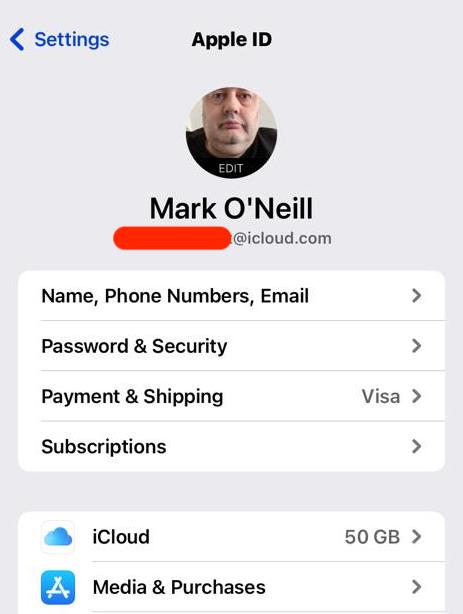
On the next screen, you will see Apple features and other apps which sync their data and settings to iCloud. This is shown by the green toggle. Go down the list and if anything doesn’t need to be synced, turn the toggle off to grey.
You can also switch off Apple features like syncing your photo library, and automatic backups of your phone (although this is not recommended for obvious reasons). You can also see a breakdown at the top of what is hogging the most space.
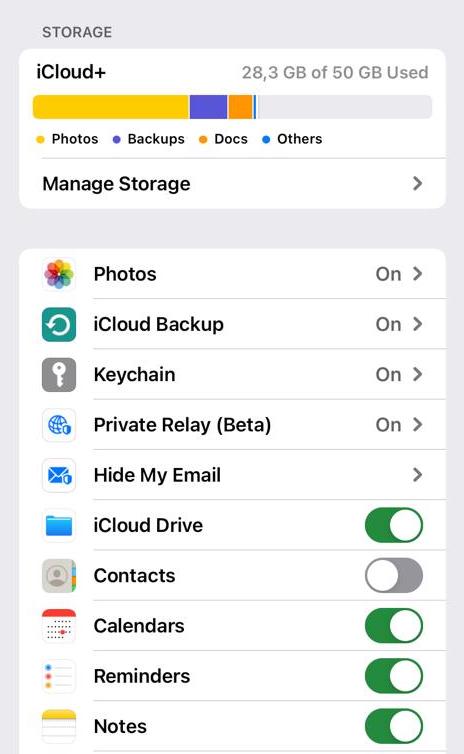
Delete backups
Now it’s time to delete all of the unnecessary backups. In the previous screenshot, you can see an option at the top called Manage Storage. Tap on this, and this is what you will see.
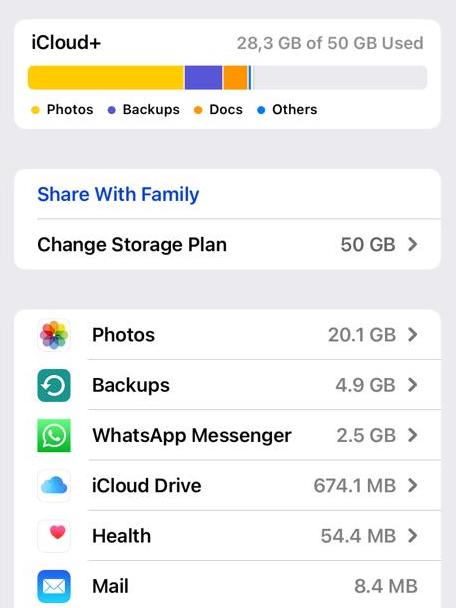
Everything in the list are backups of that particular app. If you tap one, say Backups, you will see the backups stored in your iCloud account. The following screenshot shows that I have an old backup from an iPad I no longer have. So I tapped it to delete it.

The next screen will give you a Delete Backup button. Tapping that wipes it from your iCloud account.
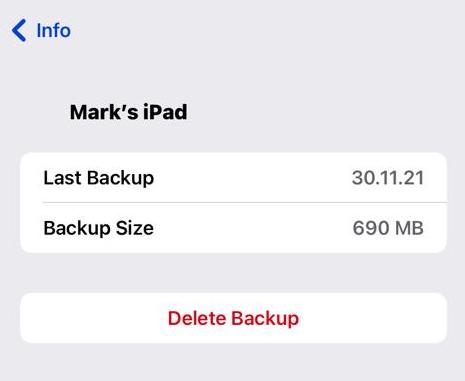
Go through iCloud folders and delete any big unneeded files
Once you have removed any unnecessary apps and backups, it’s now time to go through each iCloud folder and delete any unnecessary files.
On iOS, this includes the Files app and the Photos app.
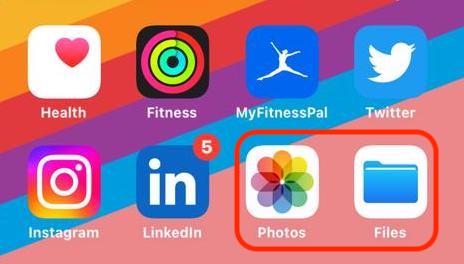
On MacOS, you need to check the Photos app, iCloud Drive, and the Shared folder.
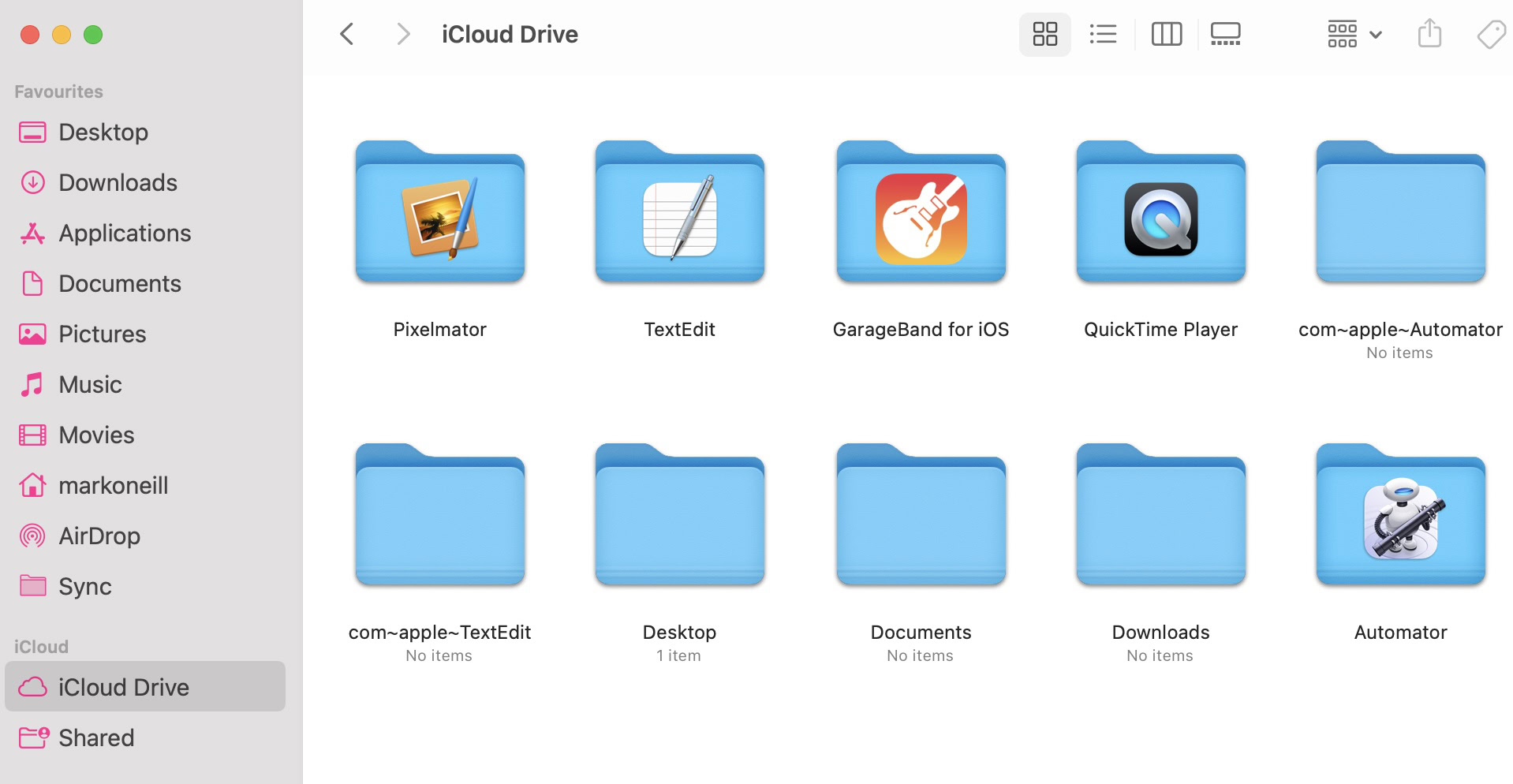
Move big needed files to other storage solutions
When you’re down to the essential files that you can’t delete under any circumstances, you have a few choices.
- Upgrade your iCloud storage to the next level. 50GB for example is only 99 cents a month. 200GB is only $2.99 a month.
- Install other cloud storage apps to your phone. If you are reluctant to pay for extra storage, take advantage of the other cloud storage apps and their free plans. The main ones are Google Drive and Dropbox, but Sync is also a good one for the security-conscious folks. All three of these services have reasonable free plans.
- Move your photos to Google Photos. If it’s photos which are taking up most of your iCloud space, consider moving them to Google Photos.
- Email the files to yourself to a specially set-up Gmail address. If you don’t want to use cloud storage, why not email the files to yourself and keep them in your Gmail email?
- Move the files offline to a removable hard-drive. Of course, you could simply just go old-school and invest in a removable hard-drive or USB stick. Make sure to have more than one though in case one breaks.
Read more: How to turn off your iCloud music library
FAQs
Yes, but you need to go to iCloud.com in a web browser. Once you’ve logged in, go to iCloud Drive, and click Recently Deleted. Click Recover all to bring back everything, or select individual files and click Recover.

